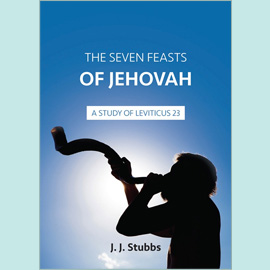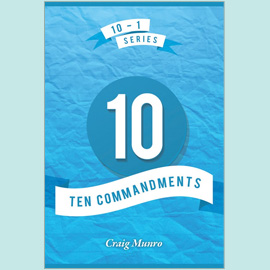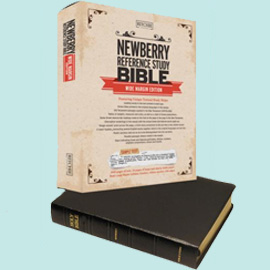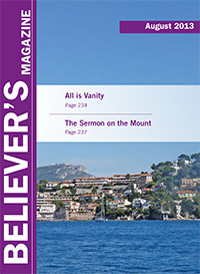(Lev 2.1-2,11; 24.5-9; Song 4.6-7; Phil 4.15-18)
The word "frankincense" (sometimes translated as "incense") occurs 23 times in Scripture. It is used only twice in the New Testament (Mt 2.11; Rev 18.13). More than half of the Old Testament references relate to the worship and sacrifice of the Tabernacle and Temple. Frankincense as it would be known and used in the Tabernacle and Temple would take the form of a fine white powder that is bitter to the taste and burns readily, emitting a white smoke. When burned, it is uniquely fragrant.
Frankincense is the product of a particular tree that has become known as the "tree of frankincense" (Botanical name - Boswellia sacra - see Bible Plants, Fruits & Products by T H Radcliffe and the "International Standard Bible Encyclopaedia"). The tree is deep rooted, grows on the hillside and can withstand the gales and cold blasts of winter. The substance is obtained by making an incision in the bark of the tree. This exudes a gum which, when solidified, is easily ground into a fine white powder. Pure white frankincense is obtained only from the first incision in the tree. Further incisions in the same season produce a less pure substance. It is significant that the purest and best frankincense comes from an unmarked (unsullied) tree.
This article examines two of the Old Testament references to frankincense: "Frankincense and the meal offering" (Lev 2.1), and "Frankincense and the shewbread" (Lev 24.7). A future article will deal with the "Hill of Frankincense" (Song 4.6). These references are then considered in the light of the words written by the Apostle Paul to believers at Philippi: "But I have all, and abound: I am full, having received of Epaphroditus the things which were sent from you, an odour of a sweet smell, a sacrifice acceptable, well pleasing to God" (Phil 4.18).
Frankincense and the Meal Offering
The meal offering is one of five offerings of which we read in the opening chapters of the book of Leviticus. Together they speak figuratively of that which Christ has done and continues to do for the believer. Three (the burnt, meal, and peace offerings) are referred to as "sweet savour" offerings. The term is not used of the sin offering or of the trespass offering. The fat of the sin and trespass offerings was burned upon the brazen altar, but the remainder of the sacrifice was burned on the bare earth outside the camp. This foreshadowed Christ's suffering for sin in its root and principle (the sin offering) and for the actual sins of the believer (the trespass offering) on Golgotha's hill outside the walls of the city of Jerusalem. The sweet savour offerings depict the forgiven believer able to approach the throne of God as a worshipper.
The burnt offering was burned entirely upon the altar and depicts Christ as the One who uniquely and completely delighted the heart of the Father. He also fulfilled the believer's obligation to God which he (the believer) could not satisfy in his own merit. As the meal offering Christ is seen as the perfect, holy Man pleasing God upon the earth. As believers we also have obligations to our fellow men which we are not able to fulfil. Christ as the meal offering fulfils this on our behalf. The peace offering represents the forgiven believer resting in and upon Christ in the presence of God and enjoying both peace with God, and the peace of God. Together they feed upon and delight in the Sacrifice.
The association of the meal offering with Christ's life on earth is clearly indicated by its main ingredient. This was fine flour obtained from what was declared in Genesis 1.29 to be man's portion from the earth: "God said, Behold, I have given you every herb yielding seed, which is upon the face of all the earth…to you it shall be for meat". The smooth consistency of fine flour suggests the constancy of holy humanity and the perfection of spiritual graces that marked Christ's life on earth. As believers we are encouraged to develop these qualities as the fruit of the Spirit (Gal 5.22-23) but they were ever unalterably resident in Him.
The fine flour was mingled with oil which speaks of the person and presence of the Holy Spirit. When Christ read from the scroll of Isaiah in the synagogue at Nazareth, He "found" the place and read: "The Spirit of the Lord is upon me, because he anointed me to preach the gospel to the poor" (Lk 4.18). John wrote following Christ's baptism: "I saw the Spirit descending from heaven like a dove, and it abode upon him" (Jn 1.32). Prior to His temptation in the wilderness we read: "Then was Jesus led up of the Spirit into the wilderness to be tempted of the devil" (Mt 4.1). The Spirit was ever with Him and upon Him and led Him in paths of righteous obedience.
There was to be no leaven in the main meal offering. Leaven in the Scriptures is a symbol of evil. The One who bore holy humanity upon the earth was without and apart from sin. Conceived of the Holy Spirit and born of a virgin, He did not derive from nor did He partake of Adam's fallen nature. He was "the last Adam…a quickening spirit" and "the second man…the Lord from heaven" (1 Cor 15.45,47). John wrote, "Ye know that he was manifested to take away our sins; and in him is no sin" (1 Jn 3.5); and Peter records that He "did no sin, neither was guile found in his mouth" (1 Pet 2.22).
The meal offering was to contain no honey. It obtained a different and more enduring sweetness from frankincense. Honey is sweet to the taste but deteriorates as temperature increases and it has little innate or continuing fragrance. Frankincense, though bitter to the taste, gives its greatest fragrance when heat increases. Christ suffered the fire of men's hatred and contempt, and the wrath of God upon sin, but this only revealed the fragrant perfection of His character. Matthew presents Him as gently fulfilling the prophecy written by Isaiah: "A bruised reed shall he not break, and smoking flax shall he not quench" (Mt 12.20). John wrote of the response of the officers sent to capture Jesus but who returned without Him and in explanation said, "Never man spake like this man" (Jn 7.46). Mark records the comment of the people after Jesus gave hearing and speech to the deaf mute: "He hath done all things well: he maketh both the deaf to hear, and the dumb to speak" (Mk 7.37). When hardened Roman soldiers brutally nailed Him to a tree, His words were: "Father, forgive them; for they know not what they do" (Lk 23.34). These occasions revealed moral glory in the context of divine love.
In summary, frankincense with the meal offering speaks of the fragrance of the life of the Lord Jesus when he walked as a holy Man upon the earth. Some, John Baptist for example (Jn 1.26), watched Him as He walked; others delighted in His company as they walked with Him observing the miracles He performed and listening to that which He taught. But above all else the frankincense with the meal offering speaks of the delight and joy His walk on earth brought to the heart of the Father who observed Him from heaven and on two occasions (Mt 3.17; 17.5) declared, "This is my beloved Son, in whom I am well pleased".
Frankincense and the Table of Shewbread
The Table of Shewbread, together with the Golden Lampstand and the Golden Altar of Incense, was placed, by divine instruction, in the Holy Place of the Tabernacle. The table was constructed of the same materials as the Ark and its cover in the Inner Sanctuary - pure gold and acacia wood. The cover of the Ark was made of solid fine gold beaten into the form of two cherubim facing each other with heads bowed and wings held aloft. Golden cherubim speak of holiness, majesty and deity. The glory of the Lord (the Shekinah) resided between the cherubim. The Ark itself was constructed of acacia wood (a white wood that grew in the wilderness) covered by the same pure gold that formed the cover. The Ark was inseparable from the cover. There was a rim of gold around the top of the Ark into which the cover was placed. The gold of the cover and the gold of the Ark were presented without join, speaking of the seamless deity of the Father and the Son.
To be continued.









